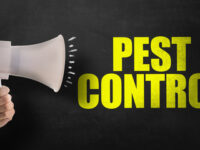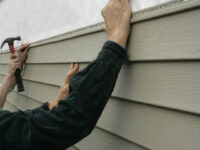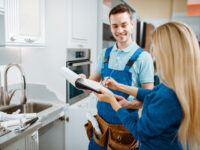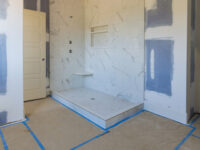What Does a Chimney Sweep Do?
A professional chimney sweep uses specialized tools to remove creosote buildup. Remove logs, the grate, and any decorative items from the fireplace before your sweep arrives. For more information, click the Website to proceed.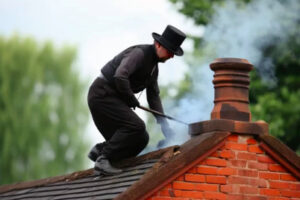
A clean chimney improves your home’s ambiance and air quality. It also prevents foul odors from settling in your living areas.
Chimneys are not infallible, and no matter how careful homeowners are, they must deal with some damage or deterioration. It is essential to schedule a regular chimney inspection and cleaning to prevent combustible debris from building up inside the flue and causing a chimney fire. A chimney sweep can also diagnose long-term problems like drafting issues and leaks and determine whether a fireplace or chimney is functioning properly.
There are three levels of chimney inspections, and each offers a different level of in-depth analysis. A Level 1 inspection is the most basic and covers the easily accessible portions of the chimney interior and exterior. During this inspection, the chimney sweep will use a special high-definition video scanner to examine your flue. This will enable them to see areas a visual inspection might miss, such as internal cracks or other structural damages. The chimney sweep will also check for proper clearances from combustible materials in accessible areas of the home.
A Level 2 inspection is more detailed and involves the chimney sweep crawling into attics, crawl spaces, and other accessible areas in and around your chimney. They will also use a special camera to inspect hard-to-reach areas of your chimney. In addition, they will ensure that your chimney and venting system meet NFPA 211 requirements.
Level 3 inspections are reserved for the most serious of cases and involve removing parts of your chimney or the building structure to access difficult-to-reach areas of your chimney and flue. In many cases, a chimney expert will recommend a Level 3 inspection when a Level 1 or 2 inspection suggests that hidden hazards can only be evaluated with the use of specialty tools to access concealed areas of the chimney or flue.
The chimney sweep will recommend any necessary repairs or services depending on your circumstances. Often, these include tuckpointing or relining your chimney. These procedures are vital to ensuring the integrity of your chimney and can save you a lot of money in the long run.
A good chimney sweep is a professional who takes pride in their work. They will take proactive measures to minimize mess inside and outside your home and clean up afterward. They also use tarps to protect your floors and fireplace from soot and debris. Chimney sweeps also bring specialized tools like dust collection vacuums and a hose to assist with cleaning. You can help by moving furniture or other items in the way so that the sweeps have easy access to your fireplace and chimney.
Chimney sweeps know how to safely remove creosote, a highly flammable and sticky residue that is the leading cause of chimney fires. Creosote builds up in your chimney flue when you burn wood or other solid fuel. It would help to have your chimney swept when you can see a creosote coating the walls of your fireplace or chimney. The CSIA recommends scheduling your chimney sweep appointment when the layer is 1/8 inch thick or higher.
Creosote is very hard to eliminate once it has matured into a tarry glaze, which can cling tenaciously to the walls of your chimney. When this happens, it requires a more extensive and expensive professional chimney cleaning. Chimney sweeps can use special chemical treatments to dissolve and remove severe creosote glaze, but it can take several visits.
When you choose a chimney sweep, find one certified and insured to ensure they follow all the proper guidelines for inspecting and cleaning your chimney. They will provide you with a complete report when they finish their work and offer professional advice on keeping your chimney safe for burning your favorite fires.
Ana Chevalier is a freelance business and technology writer specializing in energy, manufacturing, and construction. Her articles have appeared in The Independent, Huffington Post, and Forbes. She is a self-professed supply-chain geek, a restorer of century homes, and a lover of Min Pins. She lives in Seattle, Washington. She is likely to be found at her local Starbucks when not writing.
A chimney sweeper is a licensed and insured professional with the skills and tools to clean, inspect, repair, and service chimneys. They are trained to recognize any hazards and provide advice about fireplace safety. They will also ensure that the flue is functioning properly to vent combustible gases and particulates outside your home and prevent them from back-drafting into living spaces. Chimney sweeps will help you maintain proper heat circulation throughout your home by removing blockages and debris.
Chimney sweeping is one of the most important services a homeowner can get to ensure fire safety. A buildup of creosote often causes chimney fires. This toxic and sticky substance can ignite and burn wood, fossil fuels, and your house. A chimney fire can spread quickly, destroying the structure and causing extensive damage. Chimney sweeps use specialized equipment to clean out the chimney’s fireplace, flue, and lining and prevent the accumulation of dangerous creosote.
During cleaning, they remove soot and creosote deposits using a special brush resembling a giant bottle brush. They will put down a drop cloth to protect your furnishings and wear protective clothing like gloves, a mask, and goggles. They may need to disassemble the chimney to access certain areas to check for damages or combustible materials.
After the chimney is cleaned, they will give you a written report of their findings and recommend any maintenance or repairs that should be done. They will also provide you with a bid for any recommended work. You can then choose to accept their proposal or seek another opinion.
If you want to have your chimney cleaned, finding a certified chimney sweep member of the Chimney Safety Institute of America (CSIA) is best. They will be able to perform all the necessary inspection and sweeping work. You can look for a CSIA-certified chimney sweep by entering your zip code on their website or contacting the local chamber of commerce. Before hiring a chimney sweeper, you should also check their certifications, insurance coverage, and licensing.
Chimney sweeps can identify and resolve chimney issues, including leaks, that could cost homeowners thousands in repairs or replacement. Chimney cleaning also helps ensure fresh air circulates throughout a home and prevents carbon monoxide from building up. This makes a home a more comfortable place to live for families.
It may seem like an unnecessary expense to hire a professional chimney sweep, especially if you’re already familiar with how to clean a fireplace yourself. However, DIY chimney sweeping is messy and dangerous, and it’s easy to damage the masonry with improper tools or procedures.
A professional chimney sweeper has specialized tools and a trained eye, which allows them to identify problems that aren’t immediately apparent. These minor issues could result in costly repairs or even a chimney fire if left unattended. Professionals can assess and repair chimneys in less time, saving money and stress.
Regular chimney cleaning helps to eliminate the buildup of flammable creosote glaze and other debris that could cause a chimney fire. A chimney fire is a serious risk that can threaten your family’s safety and cause costly structural damage to the fireplace and the home’s structure. It takes only a small amount of creosote glaze to cause a chimney fire, which is why it’s important to schedule a chimney cleaning appointment as soon as you notice a buildup.
The National Fire Protection Association recommends that homeowners have their fireplaces, chimneys, vents, and solid fuel-burning appliances (think pellet or wood stoves) inspected and cleaned by a professional at least once yearly. During the inspection, the chimney sweep removes the buildup on the walls of the flue as well as any blockages and performs minor chimney repairs. The inspection, including a video camera, may be conducted inside the fireplace or on the roof.
Chimney sweeping involves removing soot, creosote glaze, and other flammable debris from a fireplace’s firebox, chimney liner, smoke chamber, and damper. The sweep can also clean the fireplace’s interior and remove accumulated bird nests and obstructions. It is important to have a cool chimney and to make sure that furniture and decorations are moved away from the fireplace area. During the visit, the chimney sweep will use shop vacuums and specialized brushes to minimize mess and dust, and they will cover the fireplace area with tarps or drop cloths to protect floors and furnishings.

